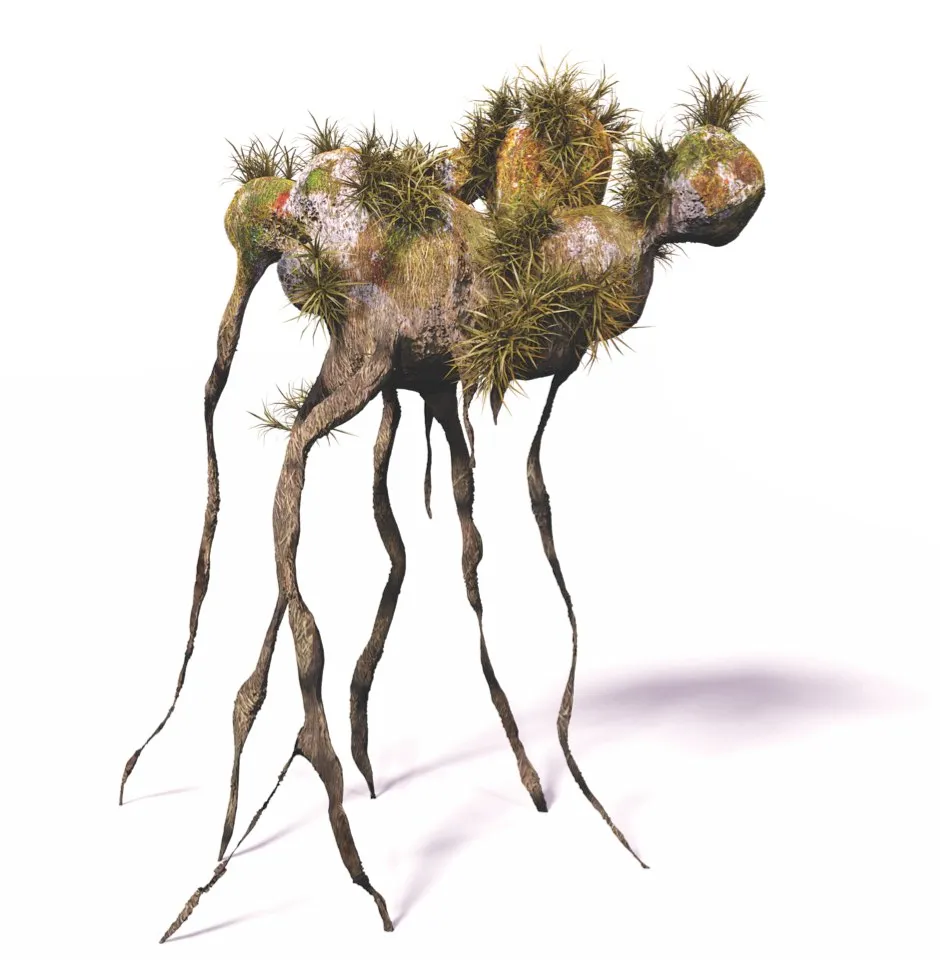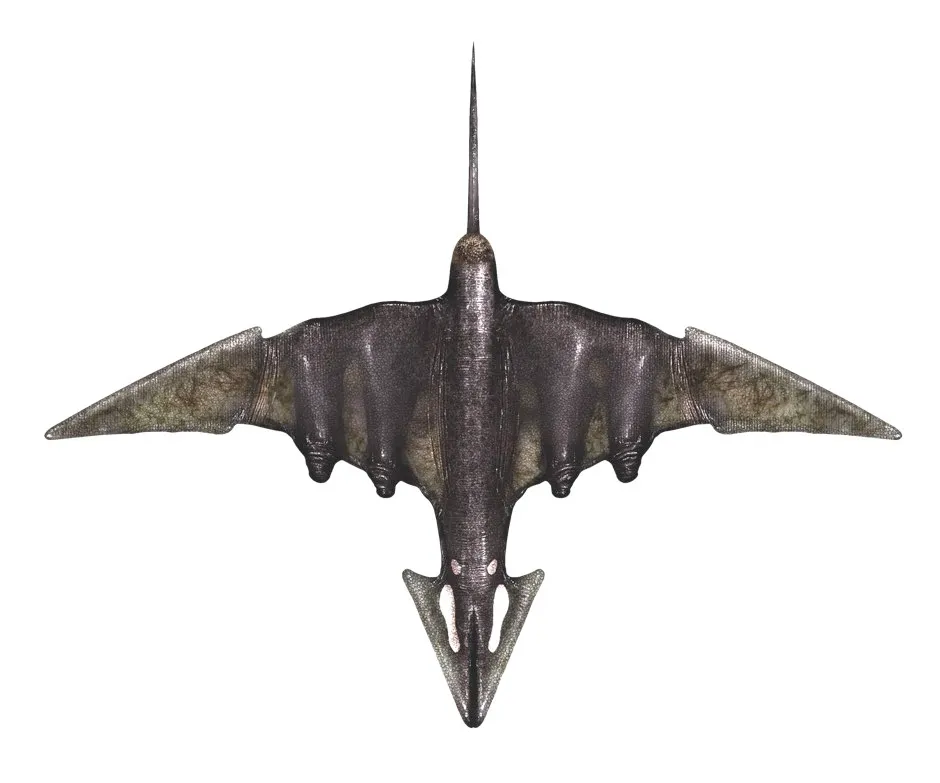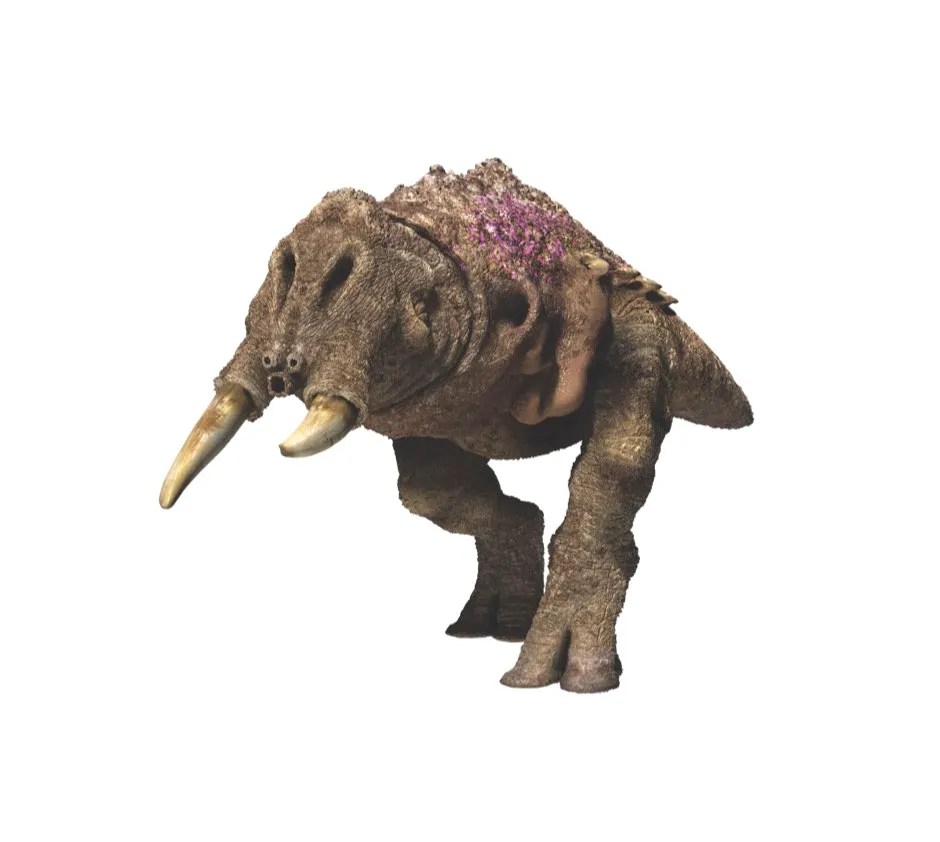Our Universe could turn out to be a pretty wild place. Recent astronomical discoveries suggest that billions of Earth-like planets are dotted throughout our Galaxy, which is just one of billions of galaxies in the Universe. “Our best estimates are that one in four stars have a planet that is the same size and the same temperature as the Earth. That’s very high,” says David Charbonneau, professor of astronomy at Harvard University, US.
And many scientists now think there is life on at least some – if not many – of those planets and their moons. One of them is Dr Chris McKay, a planetary scientist at NASA’s Ames Research Center, who says that we can assume that life is widespread based on “two simple facts”.
Read more about alien life:
- The weird worlds alien life could potentially survive on
- How synthetic atmospheres could help us hunt for alien life
First, the chemical elements of life, such as nitrogen, hydrogen and oxygen, are widespread in the Universe, as are the two key compounds of life on Earth: liquid water and organic carbon. Second, we know that life was present on Earth very early in its history – soon after the planet was formed – which suggests that once the conditions are right, life springs up easily and quickly.
“If the origin of life is widespread, then complex life will be widespread,” says McKay. That means we might expect to find more than just single-celled microbes out there. “The best way to find out is to go look.”
Some scientists and entrepreneurs are already thinking about how to get to distant stars quickly. Yuri Milner, a Russian tech entrepreneur, came up with the Breakthrough Starshot project, which proposes that tiny chips could be attached to craft propelled through space by an intense Earth-based laser. If it works, this would cut the travel time to the closest star system, Alpha Centauri, from 100,000 to just 20 years. The first tests of early designs took place this May.
In the meantime, two NASA missions are set to shine light on the atmospheres of planets that orbit other stars (exoplanets), pinpointing those that could harbour life. The TESS mission started collecting data this year, and the James Webb Space Telescope is expected to launch in 2021. “We know virtually nothing about the actual conditions on those planets,” says Charbonneau. These two missions will change that.
Visions of other worlds
Some of science’s brightest minds have already brainstormed what we might expect to find, and their conclusions formed the basis of two cult documentaries, Natural History Of An Alien and Alien Planet, which first aired in 1998 and 2005 respectively. The two films inspired many peopleto think about how other life may be similar and different on other planets. Indeed, some scientists are now trying to lay down the science of not only how life-as-we-now-it would be different in space, but also of what exotic life that was made of other chemicals might be like.
These shows parted with the common fictional view of sentient green aliens, and they applied rigorous thinking by evolutionary biologists, biomechanics experts and astrobiologists to design plausible living worlds within the restrictions of alien geology and planetary science. Many scientists think the unlikely-sounding creatures dreamed up for these shows two decades ago are still as good a guess as we have for what alien life will look and behave like. Though, with myriad of discoveries since, we also now have new insights that paint an even wilder picture.
Read more about alien life:
“On any planet in the Universe the laws of physics and chemistry will still be the same as here,” says Prof Peter Ward, a palaeontologist at the University of Washington, Seattle. “There’s only a limited number of ways to beat physics.”
Even in outer space, he argues, on an Earth-like planet there would be similar physical constraints leading to the evolution of similar life to what we have on Earth. The premise is that there are only so many ways one can efficiently see, hear, walk, swim or fly – and that natural selection will largely weed out inefficient body plans, as it has on this planet.

This means we can make educated guesses about what such life would look like, based on our biological understanding of evolution, and our geological and climatic understanding of conditions on other planets. Most of the scientists interviewed for this feature said the educated guesswork in the TV programmes mentioned previously might not be too wide of the mark – if anything, those visions might be too tame, given the potential for the vast amount of life that might have evolved on very different planets.
“The Universe has a way of surprising us,” says Theresa Fisher, an astrobiologist at Arizona State University, US. “My suspicion is that, with a range of environments that we could be looking at, it could feel very alien.”
She says that any life would be expected to follow the broad principles of ecology: it would need to have a way of getting energy, and there would be competition leading to the emergence of predators and prey, for example. But beyond that, it’s anyone’s guess what life might look like. “There’s no reason that it would have to be particularly similar to what we see on Earth.”
Stranger things
So we can’t really say that alien life would look like Earth life. Even on Earth, life gives rise to radically different, sometimes unique life forms at different times and in different places.
When dinosaurs went extinct, what came after them wasn’t more of the same. And the flora and fauna of New Zealand, with kiwi birds and practically no land mammals, are very different from those of the Serengeti, with its elephants and giraffes, or Madagascar with its lemurs.
For unique life forms on Earth, look no further than seahorses, says Dr Lauren Sallan, a palaeontologist at the University of Pennsylvania. The animal shares basic components of other fish but has a unique shape, and reaching that form required a very unlikely evolutionary pathway. “You do get weird things that happen once – both now and in the distant past,” says Sallan.

On an Earth-like alien planet, things could get even weirder. It’s possible that we wouldn’t even recognise them as life, given that our current efforts focus on finding “life as we know it”, says Casey Brinkman, an astronomer at the University of Hawaii: “There’s all sort of possibilities out there for weird stuff.”
Sallan agrees. Any life forms will have to get energy, but the way they would go about it is hard to predict, she says. “They would be filling similar ecological roles, but whether we would recognise them without a lot of study – I doubt it.”
So to start with, astronomers are focusing their search on signatures of life that we know from Earth, such as oxygen. They’re also focused on finding Earth-like rocky planets where liquid water could exist. “We have to begin with a search for life as we know it,” says Charbonneau.
“There could be life that’s very different than life on the Earth, but we wouldn’t recognise that in our data, because we don’t know and understand that chemistry very well,” he adds.
When gravity meets biology
There are many different conditions on other planets and moons, beyond chemistry, that could affect how life would evolve there. Take gravity, for example. On a bigger or denser planet, the gravity would be higher, meaning that life would evolve to be shorter, sturdier and perhaps with multiple limbs for structural support. Conversely, on a lighter planet with weaker gravity, life could hop, soar and glide more easily, and would be more likely to evolve a lighter, taller build.
The density and chemical makeup of the atmosphere would affect how easy it is for life to take to the skies: denser air would allow for more life forms treating the sky like an ocean they can ‘swim’ in, while oxygen-rich air would fuel more energetic creatures.
Read more about alien life:
- A message to ET: 47 images from the Voyager Golden Record
- Small, cool stars may be the best place to look for ET
The seasons could be vastly different, too. Many planets have much shorter orbital periods than the Earth’s 365.25 days, speeding up seasonal changes to weeks or days rather than months. Some planets have more elliptical orbits that would make seasons much more extreme, with scorching, short summers followed by long, deep-freeze winters.
The type and number of stars a planet orbits, as well as how closely it orbits them, would also affect how much solar energy and radiation it receives, and whether photosynthesis is possible or whether life would have to instead rely on chemosynthesis – using energy derived from reactions involving inorganic chemicals rather than sunlight.

The majority of stars are red dwarfs, says Charbonneau, which are less energetic and more durable than our Sun, so could offer longer time periods for life to evolve. But, early on in their evolution, such stars emit a lot of radiation that could be harmful to life and planets’ atmospheres, or even eliminate them. Alien Planet envisaged life around such a star as plant-like creatures that could fold up to protect themselves when there are solar flares, and dinosaur-like animals with a third eye on top of their heads to give them early warning that a burst of radiation is on its way.
Closer to Earth, many scientists hope we’ll find life in space within our lifetime, possibly on the icy moons of Saturn and Jupiter, such as Enceladus and Europa. “I’m willing to bet you a flat white that in the next 20 years we’ll find some life,” says Dr Seth Shostak, senior astronomer at the SETI Institute, US. “It will probably be microbial life squirting out of Enceladus or maybe Europa, or maybe under the sands of Mars: there are all these places in our own Solar System where we could find this stuff.”
NASA is preparing a mission to Europa for a 2023-24 launch, and is backing a private endeavour to reach Enceladus and study signs of life there. Meanwhile, the European Space Agency is hoping to launch a mission to Jupiter and its moons Ganymede, Callisto and Europa in 2022.
There is early evidence that those moons have oceans of liquid water deep under their icy crusts. This has raised hopes that there might be life there, especially given that we see oases of unusual life in the extreme environments around hydrothermal vents at the bottom of our own oceans.
Indeed, Natural History Of An Alien suggested that entire ecosystems may be based around deep-sea thermal vents on Europa, with tall towers of bacteria powered by the warmth and nutrients from the vents rising high above the sea bed, and territorial fish-like grazers sucking the nutrients from those towers, and in turn being preyed upon by streamlined shark-like animals.
Read more about alien life:
In principle, this vision might be possible, says Dimitar Sasselov, astronomy professor and director of the Harvard Origins of Life Initiative, US, a centre that supports multi-disciplinary research aimed at revealing if life is abundant in the Universe. But he adds that because there is less energy available in the dark ocean, so any complex life there would be expected to be much smaller.
“You have to take anything from today’s Earth and recent Earth history of complex life and just shrink it,” he says. “Can you have exactly the same behaviour and the same level of complexity but 100 times smaller? Absolutely. What’s wrong with a shark that’s just 5cm long? Nothing.”
Not everyone thinks life on those moons will be complex, though. “If there is life in the Solar System, it’s probably microbial,” says Dr Yael Kisel, support scientist at NASA’s Ames Research Center. And scientists agree that most life in the Universe as a whole is likely to be microbial, especially given that for the majority of the history of life on Earth it has been microbial. “What does a typical alien look like? It’s going to be a little blobby thing under a microscope,” says Shostak.
That’s not to say there won’t also be complex, perhaps even sentient life. Any intelligent life might not look like us, though: even here on Earth, if you take a trip to the zoo, most animals there are highly related to you but don’t look much like you. But as Shostak jokes, “If you ask trilobites: ‘Hey, what do you think the aliens will look like?’, they would probably figure they’re going to look like trilobites.”
In fact, highly advanced and intelligent life, if it exists, might be machine-based. “The majority of the intelligence in the Universe is probably not soft and squishy biology,” Shostak says. “The majority of the really smart staff in the Universe is going to be machinery.” This vision of artificially intelligent, highly autonomous machine life featured in Natural History Of An Alien, imagining it travelling the Universe, analysing planets, and adapting to local conditions much quicker than any biological life ever could.
Whatever the case, life is most probably out there, many scientists believe. “Statistically, it’s almost a certainty,” says Fisher. And this means the search must go on, says Brinkman.
“We should continue to try – because if it were to get discovered, it would be the most important discovery humans have ever made.”
Listen to our podcast with Mike Garret, the Director of Jodrell Bank Centre for Astrophysics, on the search for extraterrestrial life:
What aliens might look like
Scientists have long speculated about what living creatures on other planets and moons might look like, based on what we know about those planets and the principles of evolution and biomechanics. Here are some of the strange organisms they have imagined…
Walking plants

On other planets the boundaries between plants and animals could be blurred, and you might have trees with beating hearts, or with feet to move to better positions as they compete for light and water. You could also have an animal that spends most of its time staying still, photosynthesising, only running away if threatened. Or a massive dinosaur-like creature that splays itself out on the ground to get nutrients directly from the soil, and obtains extra energy with the help of photosynthesising plants on its back.
Mega creatures

Cooperation could lead to some fascinating creatures, such as a sea of amoebae acting as single jelly-like mega-creature, thousands of voracious shrimp-like carnivores forming a single organism that devours anything in its way, or a web of intertwined trees that collect water in wide pitchers at the top of their canopies. Similar entities do exist on Earth: for example, the world’s largest organism is a 43-hectare forest of aspen trees in Utah, comprised of about 47,000 genetically identical stems, and one massive root system.
Extreme Endurance

Getting oxygen to muscles is a key determinant of an animal’s endurance. Here on Earth, cephalopods like octopus use a copper-based molecule in their blood to shuttle oxygen, making them more sluggish than mammals and birds that use iron-based haemoglobin. Scientists have speculated about other types of oxygen transport that could make animals fitter: in atmospheres with more oxygen, we might see creatures that can fly without ever having to stop for a rest.
Tiny, blind worlds

On cold planets and moons without much sunlight, such as the moons of Saturn and Jupiter, life might have to get by with chemosynthesis, giving them a more limited energy supply. This could still lead to similarly complex life, but on a much smaller scale: a miniature version of Earth’s life. Also, in worlds without light, such as the depths of Enceladus’s oceans, there might be little need to evolve eyes: whole worlds of creatures may exist that sense their environments using other means.
- This is an extract from theAugust 2019issue ofBBC Science Focus–subscribe here.
